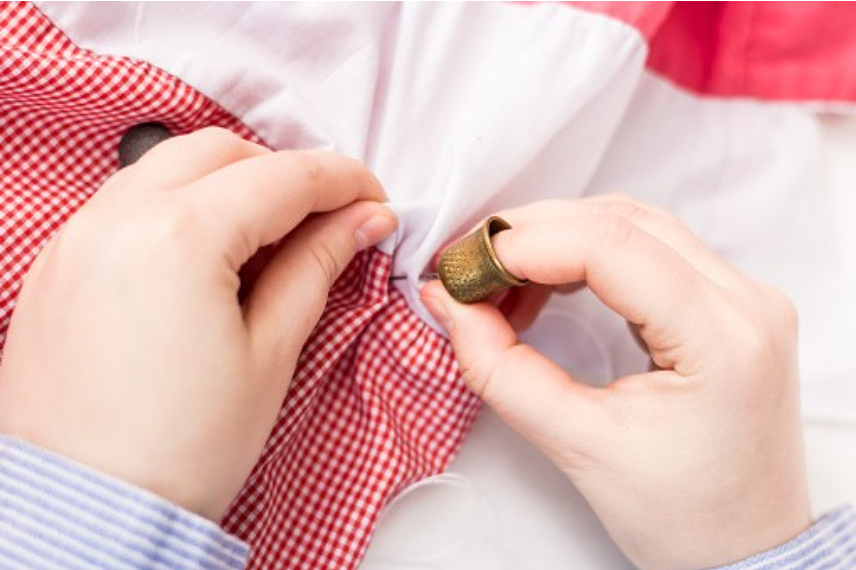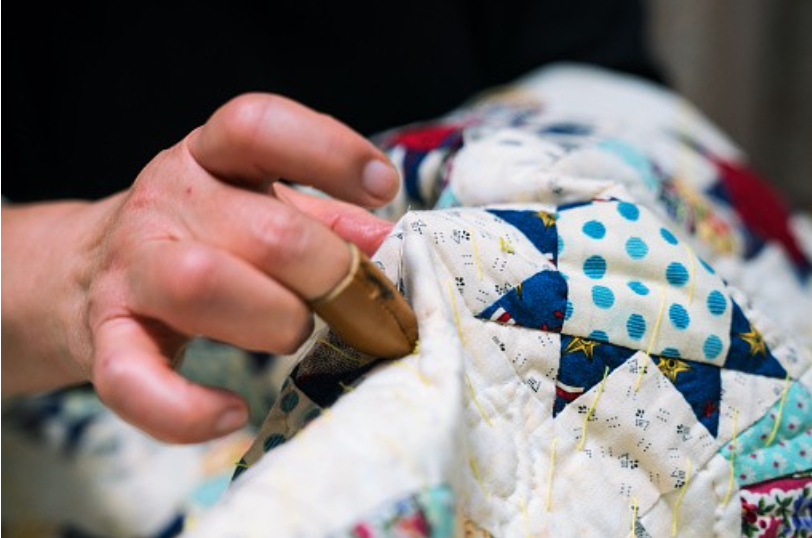
Subscribe To Emails
Subscribe to the YourCotton mailing list to receive updates on new arrivals and promotions (about once every 6 weeks)!

Have you ever wanted to create a cozy quilt for your bed, but don't have access to a sewing machine? Have no fear! Quilting by hand is an ancient and rewarding practice passed down through generations of craftspeople. Once you’ve learned the basics of how to quilt by hand, you'll be well on your way to creating gorgeous handmade quilts for any occasion. In this article, we'll talk about tips on how to master the art of hand quilting. So grab a needle (or two), and let's get started!

Hand quilting is a traditional form of quilting which involves hand-stitching fabric together to create a beautiful quilt top. It contrasts machine quilting, which involves a sewing machine instead of hand stitches. The hand quilt process includes the selection of the appropriate fabrics for the quilt top and backing layers, as well as an optional batting layer.
After carefully hand-sewing the layers together, hand Quilting is completed by carefully hand-stitching through all three layers and often embellishing with decorative stitches and threads. Finer hand Quilts also involve hand-stitching downy wadding or batting between the two layers before finishing it off with specialized binding. Hand quilting is essential to creating handmade quilts that are both functional and beautiful works of art.
Before you begin any quilting project, it is important to have all of the supplies you need on hand. This includes basic sewing supplies such as a needle, pins, scissors, and thread; quilting supplies like thread and a thimble; and necessary fabrics for the backing and batting. You will further need a quilt frame or hoop to begin stitching.
When applying stitches by hand, a running stitch is typically used, which is why it's important to always tie off the thread tail before beginning, so no loose threads remain after stitching. Quilting thread will produce the most optimal results and should be chosen based on the desired look of your project. Lastly, lay out the backing fabric with the right side facing up.
Frame Or Hoop
Hand quilting is an enjoyable and rewarding project, however, keeping quilts stretched while quilting can make all the difference! Quilt sandwiches must be tautly quilted to achieve even stitches of the desired length. This is especially important when making quilts with intricate designs that require small hand-quilting stitches and thread.
Frames are ideal for quilting large quilts as they ensure even tension and leave both hands free for stitching. Unfortunately, once assembled, frames cannot be re-used until the quilting is complete. A more portable and budget-friendly option is quilt hoops - these are deeper than standard embroidery hoops as they are designed to accommodate the varying thickness of quilt layers. With either option, ensuring quilts are stretched throughout the quilting process results in more consistent stitch length across the entire quilt sandwich!
Needles
If you're just starting with quilting, then a size 8 "between" or quilting needle is ideal for your needs. It's short and has a tiny eye - the most commonly used sizes are 8, 9, and 10.
Thimble
This finger cover significantly reduces the pressure needed when pushing a needle through multiple layers of fabric and batting.
Thread
100% cotton quilting thread is tough and more reliable than regular sewing thread.
Start With A Simple Design
Quilting by hand is a rewarding and enjoyable activity for all ages, but it can be difficult to master at first. To get the best results when hand quilting, start with a basic design such as a square or rectangle that allows you to explore the motions required to fill in each patch without being overwhelmed by intricate details.
You'll need a hand-quilting thread that matches the weight of your fabric - thinner threads work better on thin fabrics while thicker threads are best on heavier fabrics. Pick a simple quilting motif for beginners (like a running stitch) to practice with. With the proper supplies and focus, hand-quilting will soon become second nature!
Choose The Right Fabric

When it comes to quilting, not all fabrics are equal. Depending on the type of thread used - thinner for piecing, thicker for machine quilting - different materials should be used. Cotton is typically a favorite among quilters as it is durable and easy to work with.
However, thinner and more delicate fabrics like silk or satin should be avoided for two reasons; one, they can easily tear over long periods of stitching, and two, thinner threads will become distorted when used on thinner fabrics. By choosing the right fabric beforehand, you can ensure your project lasts through time and that you enjoy the process of quiltmaking!
Thread Your Needle Correctly
Threading your needle correctly is important for both ease of use and results. Start by threading the needle through the eye from back to front, then pull the thread through until there is a tail of about six inches hanging off the end. Next, take the thread over the top of the needle and pull it through until there is an equal amount of thread on both sides of the needle. Finally, hold onto the end of the thread with one hand and gently tug on the other end until the thread is snug against the eye of the needle.
Make Small Stitches
When you first start quilting, it’s tempting to make large stitches to finish your project quickly. However, this will only result in sloppy workmanship and an uneven finish. It’s better to take your time and make small, even stitches about ¼-inch long. Not only will this give you better results, but it will also help prevent fatigue in your hands and arms.
Use A Thimble

A thimble is a small metal or plastic cup that fits over your finger and protects it from being pricked by the needle as you sew. If you don’t have a handy thimble, you can also use a piece of tape or a Band-Aid® wrapped around your finger for protection. Simply put, using a thimble will make quilting much more comfortable and enjoyable!
Take Breaks Often and Enjoy your Finished Product
Quilting can be taxing on your hands and arms, so it’s important to take breaks often to avoid fatigue. Afterward, you will have a beautiful new blanket or project that you can be proud of!